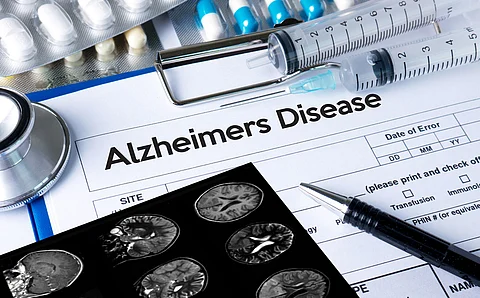

A new study has offered hopes of reversing symptoms of Alzheimer’s disease, a neurogenerative disorder.
Preliminary experiments in mice have shown that blocking synthesis of toxic lipids in the brain could prevent the accumulation of a protein called tau, which contributes to neurodegenerative diseases like Alzheimer’s disease. The findings are published in Neuron.
These toxic lipids are produced by a population of the brain’s immune cells called microglia. Some of these cells protect brain health, while others worsen neurodegeneration.
“We set out to answer what are the harmful microglia in Alzheimer’s disease and how can we therapeutically target them,” Pinar Ayata, the study’s principal investigator and a professor with the City University of New York (CUNY) said in a statement.
Scientists have earlier detected harmful microglia in mouse models in aged individuals and mouse models (animals made to carry mutated human genes involved in the accumulation of neurodegenerative proteins in Alzheimer’s disease). They are rarely found in heathy adult mice, the study highlighted.
The researchers analysed human postmortem tissues to find that Alzheimer’s patients had twice the amount of harmful microglia.
To gain insights on what produces bad microglia, the team conducted further lab experiments and found that a stress pathway can prompt microglia to produce toxic lipids, which damage neurons and a specific type of cells, both of which are essential for brain function.
Mammalians cope with cellular stress like misfolded proteins (when proteins adopt an abnormal shape) by activating stress response pathways.
They next show that blocking this stress response in mice reversed symptoms of Alzheimer’s disease.
“These findings reveal a critical link between cellular stress and the neurotoxic effects of microglia in Alzheimer’s disease,” the study’s co-lead author Anna Flury, a PhD student with the CUNY Graduate Center’s Biology Program said in a statement.
Flury explained that targeting this pathway may open new avenues for treatment by either halting the toxic lipid production or preventing harmful microglial cells from being activated.
For now, the US Food and Drug Administration (FDA) has approved four drugs to treat symptoms such as delay decline in memory and reduce confusion. They, however, are not curative and cannot stop the disease from getting severe. They affect certain brain chemicals and offer modest and temporary improvements in memory and cognitive functions for six months or less, according to the Harvard Health Publishing website.
The FDA also has approved two other drugs to clear beta amyloid, one of the neurodegenerative proteins that build up in brain in people with Alzheimer’s disease. These medications may slow the progression of Alzheimer’s disease.
Over the past decades, the main focus has been on beta amyloid to develop a treatment. For example, antibody therapy targeting this protein has received encouraging results.